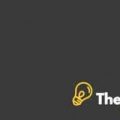
Black Heath Case Solution
Introduction
This case sheds light on Black heath, which is a family owned manufacturing company. The company has been managed and controlled by Lee for several years. Its owner, Mr. Black heath, decided to handover the business to his son, an Ivy league MBA qualified and a motivated person. He, after taking over the company, realized that the company did not incorporate any budgetary systems of control to assess and evaluate the company's performance as compared to previous years. He appointed his old friend, Crofton Brockley currently handling budgeting projects of the consultancy firm. He determined that Lee lacked the knowledge of budgetary control and finance, hence Trafalgar fired Lee and employed former employee, Ladywell as the bookkeeper and the analyst of the company. On the other hand,Brockley collected data to ensure and assess whether the company was under loss or not.
Analysis
After analyzing the data gathered by Brockley and Ladywell, the company's financial performance while calculating the production budget of the enterprise has been evaluated. Taking the budgeted sales of the company and adding the ending finished goods inventory, which was supposed to one and a half of the next month's budgeted sales and subtracting the opening inventory of finished goods, we get the required production units. It was estimated after calculating the monthly production requirement that the production requirement was less than the actual units produced, leading the company to provide excessive units incurring additional holding cost of finished goods and further raising its month ending inventory levels.
While preparing the manufacturing budget of the company, it was assessed that the total monthly manufacturing cost of the business was calculated by adding total variable overhead and total fixed overhead. It was determined as high which could be reduced if the company would decrease its indirect labor cost or its indirect material cost. Furthermore, the company could downsize some of its department's work forces to reduce the number of monthly salaries. The company could also move its offices to a location where rents were cheaper. These initiatives, if taken by the company, could reduce the overall manufacturing cost, resulting in increased profit margins.
The sales budget was prepared by multiplying the selling price of the company's products with the actual or estimated amount of sales. The company could increase its sale by implementing effective marketing strategies and advertising its products using TV, Radio, social media and other platforms available on the internet. Furthermore, the company could increase its brand image in the market by improving its products’ quality so that it could charge a premium on their selling price. Moreover, the company could increase its sale by enhancing its current production unit and expanding its production units through acquisition to increase its production capacity.
The cash collection budget was calculated by adding the amount received in the months where 30% was received in the current month, and 20% was received in next month, whereas 20% was received two months after sales and remaining 10% was received three months after sales. After adding these figures, we achieved monthly cash collection amount.
While preparing the direct material budget it was assumed that it took one material per unit to produce one unit of product. Moreover, the units to be produced with the direct labor hours were multiplied, adding the ending inventory of raw material and subtracting the opening inventory of raw material. The amount of material to be purchased by the company could be calculated. The company could effectively and efficiently maintain and control its inventory by implementing JIT inventory management system to decrease the cost of holding the inventory in a warehouse...................
This is just a sample partial case solution. Please place the order on the website to order your own originally done case solution.










